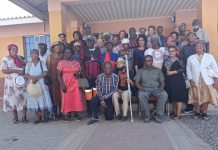Africa-Press – Namibia. I RECENTLY noticed articles in the media that made my mouth drop open in amazement. Apparently, the organisation responsible for allocating money and financial support to Namibian students is facing severe challenges in collecting the loans doled out to those (former) students.
Among the reasons given are that they couldn’t trace people and that their manual database made their work very difficult and time-consuming. As always, we need to be careful and not assume that the article is necessarily wholly accurate. However, even if part of it is accurate, why are we still working with manual databases in this day and age? How can we not be able to trace former loan recipients? We could probably just check Instagram or TikTok to find them.
We constantly fill out forms, provide personal and other details, apply and register for a host of things. These days, the forms are usually sent to us by email after requesting them by phone or online. If we are really lucky, we can just download the forms from the website. However, once the document is digitally ours, we then have to print it out, fill it in and hope that they can read the scribbles I call my handwriting. Then we proceed to scan the completed document and send it back.
All in all, this is a very convoluted way of doing things, especially as there are so many easier ways to do it these days. Not only that, but by bringing these processes into the 21st century by using technology, we make things easier for customers, streamline processes, make documents searchable, and can store them digitally instead of in costly warehouses and filing systems.
Imagine being able to search someone’s records, check their repayment status or search for a multitude of other things with the click of a mouse. We know banks and other institutions in Namibia have started digitising their client records. This means that records, applications, and statements dating back years are now on the servers and no longer in hard copy.
It means that clients can be assisted more quickly, and their queries and questions and status answered and retrieved in a flash. Documents became shareable between departments and especially with people working from home. With the pandemic, employees were able to access documents securely at home and thereby continue their work. It also means that the processing of documents has become much quicker, saving time, effort and labour costs. Not to mention cutting down on simply carrying papers and documents from department to department and not having to do tedious paperwork manually.
The digitisation process is a major project. However, the results and improved efficiency of the organisation is tangible at every level. The data is also a lot more secure and less likely to get lost if stored online and in the cloud.
Namibian organisations, both public and private, have an opportunity to ‘Go Digital’ and make their organisations more efficient and effective. It saves costs, improves engagement with customers and provides a better level of service all round. The technology is there. Not using it means potentially losing track of paying customers, or paying clients double or, even worse, never being able to recoup money that needs to be repaid.
For More News And Analysis About Namibia Follow Africa-Press






